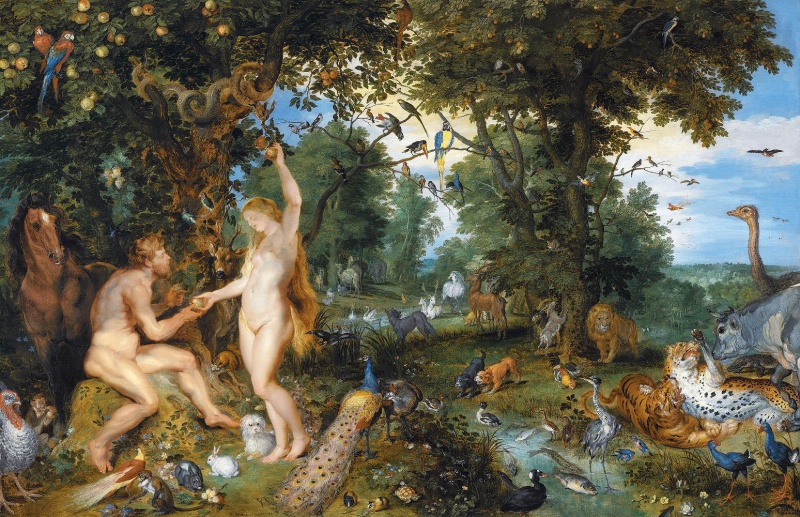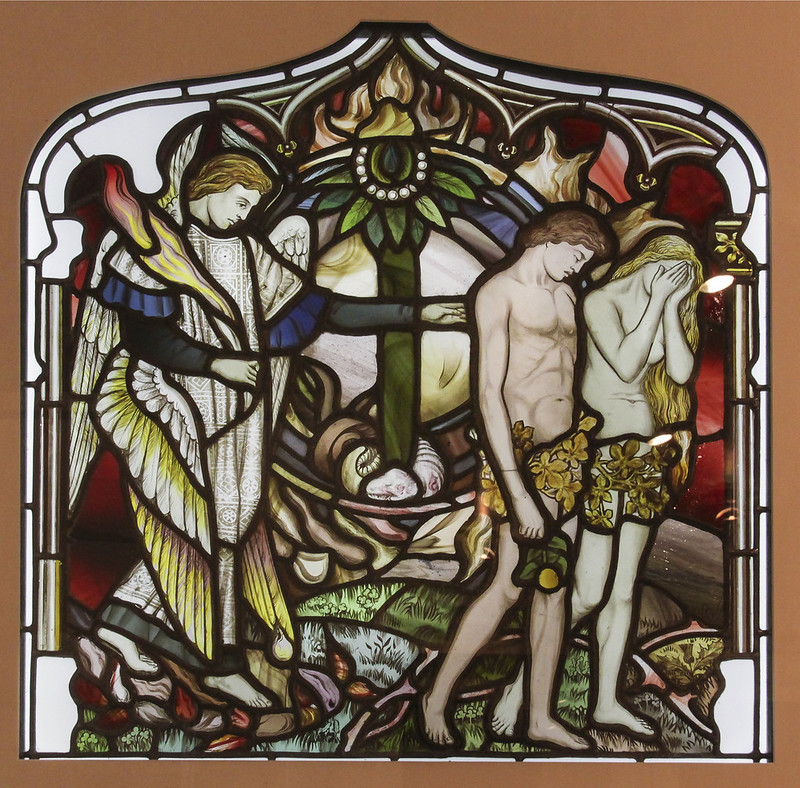
For Poland, 1989 marked not only the end of communism and the beginning of entering the structures of the desired West, but also an exit from a kind of protective cocoon. Real socialism, separated Poland from the free world, whilst at the same time "protected" it from the influence of the raging sexual revolution. Today, thirty years on, fully aware of our freedom, we must face this threat ourselves. The threat that has now taken on the form of gender ideology, but is nonetheless rooted in the sexual revolution of the second half of the 20th century. In order to get to know the new - old enemy better, it would be worthwhile to read the book "Adam and Eve After the Pill: Paradoxes of the Sexual Revolution" by Mary Ebestadt - an American publicist and writer, described as "intimidatingly intelligent" (G.Will) and named "one of the sharpest and creative social observers of our times" (F.Fukuyama).
The Pill with a capital "P"
Apart for the original sin, for me no other event in human history" writes Mary Eberstadt, "which has had a greater impact on human beings, than the Pill (...) I believe, without any doubt, that the Pill has given full permission for everything - from adultery and romance, premarital and extramarital sex, to the separation of closeness and procreation. - stresses Mary Eberstadt in the author's introduction, describing the crucial importance of the sexual revolution and its main tool - the contraceptive Pill - in the history of our world, spelled with a capital letter. According to Father Robert Skrzypczak, the author of the introduction to the Polish edition, contraception as a phenomenon is, even in church circles, "covered by almost universal silence", because for liberals, who hold the lead in today's Church, it is a substitute, secondary to other burning problems of contemporary times (poverty or ecology).
Meanwhile, the pill gives the illusion of a peaceful life, free from responsibility, especially towards those who have made promises of love. The lack of consequences of intercourse, an unwanted pregnancy, creates a kind of "contraception culture", i.e. a state of mind.
Mary Eberstadt's goal is to disprove the thesis of "the absolute blessing of the sexual revolution for all humanity". It (the revolution) was to free women from the "bonds of fertility" and men from the tormenting problem of taking responsibility for the women with whom they had sex and for the children who were conceived as a result.
The author divided the book into eight problem sections. In each chapter she "deals" with another thesis. At the beginning she writes about the phenomenon of Western intellectual and scientific elites, which, contrary to the real facts and historical events, were looking at the East and the ideas flowing from there.

Jan Brueghel Starszy, Peter Paul Rubens, Ogród Eden
The Cold War and the Pill
Thirty years have passed since the end of the Cold War. Its unquestionable winner is the West, and the losers are the communist states with the Soviet Union at the forefront. However, throughout the entire Cold War period (and today also), the intellectual elite, and especially the academic staff of universities and colleges in the West, were enthusiastic about the ideas of communism. From our point of view, of the people from the former socialist camp, such a phenomenon seems ridiculous. But the majority of the intellectual elite of the Old Europe and North America considered it "obvious that communism is better or even best”.
Such left-wing views of the elites led to widespread "turning a blind eye" to any evil in the actions of the Soviet Union and its satellites, while condemning the USA for everything, even, or especially, contrary to the facts. Intellectuals used exactly the same method of "scientific disbelief" in reality as it really is, with respect to the sexual revolution with its detrimental impact on the society and on the changes that take place in it. Yet it was in Soviet Russia, just after the victory of the Bolsheviks, that the first sexual revolution in the world was carried out, implementing almost all the demands of today's left-wing progressives: from abortion on demand, through unobstructed sex without obligation, to the systematic destruction of families. But after a few years it turned out that "sexual freedom" so destroys people and society as a whole, that it is neither fit for work nor for government, and Joseph Stalin bloodily ended this Lenin experiment.
Just as the representatives of the Western elites, were blind and deaf to the crimes of communism, they also rejected all empirical evidence of the "catastrophic economic, social and moral consequences" of the sexual revolution. Whereas the minority of scientists across the world who seriously dealt with the problem of the effects of the contraceptive pill were met with hostility, scoffing and ridicule.
Interestingly, even before the invention of the pill, a prominent sociologist at Harvard University, Pitirim Sorokin, observing social changes in the USA, in his book "American Sexual Revolution" published in 1956 described "sexual anarchy" as the cause of the growing number of divorces, extramarital births, abandonment and neglect of children, primitivization of high and low art. After more than 60 years doesn't that sound familiar in Poland? The scientist also pointed to a significant increase in the number of mental disorders. Sexual obsession," wrote Sorokin in the midst of the last few years, "is now constantly bombarding us, from cradle to grave from all corners of our living space, at almost every step of our activity, destroying our feelings and thoughts.”
Women robbed of love
Sexual revolution is a bit like socialism. Elderly people remember the satirical definition of this system, that it heroically fights against problems unknown in other systems. A similar paradox has emerged in countries that are pursuing the achievements of the revolution. Here are its greatest winners, its beneficiaries, the people for whom all this happened to give them freedom, namely women, suddenly said that they were in trouble, which was not the case for their predecessors from before the sexual enlightenment.
It turned out that free, liberated women wanted romantic love, but there are no real men who could love them. A side effect of the revolution was to stop men maturing. Instead of warriors, husbands and lovers, women get eternal boys. You can compete with them on the labour market and in other spheres of life, but problems begin when it comes to starting a family.
Eberstadt, referring to the media discussion about Kay S. Hymowitz's essay and book, writes about the disappearance of decent men, that modern men and women are "on a collision course with human nature itself. Late marriage and parenthood are contrary to human biology, which usually leads to an uncontrolled sequence of health, economic, and social consequences: it increases the number of men-children, single mothers, and families without a father.
Characteristically author, when describing a portrait of a contemporary woman, mainly refers to sources whose authors are practically exclusively ladies. Eberstadt, with the wealth of examples from various sides of the argument, draws the rather pessimistic conclusion that from all that female writings emerges "a dark but fascinating world of sadness and suffering, a single character of whom it has long been said that she is the main beneficiary of the sexual revolution: a modern woman".
I am writing these words in a small restaurant. On the table, remains of a mint tea cool down, and an older couple are leaving the place. The man, like an old-fashioned gentleman, takes care of his wife, who not coping with age so well. He takes looks after, serves her, helps her to mount a higher step. He also did not forget to buy them a take away meal, probably their supper. Is he one of the last members of a dying species?

Jan Cranach, Adam i Ewa
Where are those men...?
"Where are the men?" Danuta Rinn used to sing. Mary Eberstatd blames the disappearance of male traits in men on the achievements of the sexual revolution. Men don't develop a protective instinct because they have no one to look after. In the era of universal recreational sex, there is no place for procreation and birth of children. Men are like hunters hunting for more and more new erotic experiences. The chase is often successful, but this abuse of promiscuity does not lead to fulfilment. According to research quoted by the author of the book, sense of happiness disappears among contemporary men. And all this happens in the era of universal accessibility, even the surfeit of erotic images. And here we move on to another sphere where the sexual revolution strips men of masculinity - pornography.
Widespread "feasting" on pornography leads to a multiplication of sexual contacts with new partners, increases the desire to diversify "dating" by means of alcohol or drugs. Regular porn viewers frequently imitate their erotic idols according to the principle "I can do what They do", and from there it’s just a step to extreme sex and violence. And all these phenomena are increasing with the growing availability of pornography.
This erotic gluttony provides the author with an opportunity to compare the epidemic of pornography to obesity so characteristic of the USA. And like the ordinary one, sexual obesity also leads to far-reaching social consequences. This is particularly true for the young generation, "completely immersed in the consumption of pornography. Many of them don't know a world without it." Eberstatd quotes the results of research conducted on first-year students of American universities: "(...) they have the following characteristics: increased tolerance in the choice of erotic material, which in turn leads to the search for bizarre and perverse material; an increased risk of distorting one's own body perception, especially that of girls; misconceptions and improper notions about the nature of dominant sexual behaviour as well as risky and dangerous behaviour. Isn't that what the LGTBQ progressive freedom heralds want, but describe it using a more joyful colourful language?
Children on the altar of the revolution
"The revolutionary wave has kidnapped not only adults, but also children, who are often subject to adult sexual deception."
With the passage of time, the sexual revolution like all other revolutions "transforms into a powerful beast", which devours more and more new victims. This is also the case with the innocence of children. Pre-revolutionary America, permeated with the climate of the 1960s and 1970s, slowly began to succumb to the "charm of paedophiles". Especially the educated and sophisticated circles became more and more inclined to soften the taboo which was sex with minors. This was mainly the case for contacts between men and boys. Eberstadt quotes an article from New Republic entitled “Young Falcons” (a slang term for a boy used by pedophiles), in which the author expresses his sympathy for pederasts, asking the "dramatic" question whether it is not these boys who are the main predators in male-boy sex. This softening of the elite was very well illustrated by Michael Jackson and the scandals with young boys he hosted in his Neverland estate. No case ended with the conviction of a star and their social condemnation.
According to the author, the taboo concerning girls remained intact. Roman Polański found out, who after using a thirteen-year-old, still has problems with the American justice system.
Madness, as we know, has no borders, so the abolition of taboos has also crossed the boundaries of science. In 1998 the Psychological Bulletin of the American Psychological Association, published an article on the abuse of minors in colleges. Its authors, three scientists, expressed their opposition to the widespread belief that the sexual exploitation of minors causes serious psychological harm to minors regardless of gender. They opposed the commonly used terms such as "perpetrator" and "victim". They recommended that the term "consensual contact with a positive reaction" be replaced simply by "sex between an adult and a child". The authors of the article even suggested that a consensual sexual act of an adult with a child will one day become the norm in therapeutic circles. It is hard not to mention here the scandal from the Polish backyard, when the well-known and respected psychologist and therapist Andrzej Samson turned out to be a paedophile, using in practice the suggestions of his American colleagues. The media of the time, especially those intended for "elite and sophisticated" audiences, were full of expressions of understanding for the psychologist.
Paradoxically, the event that stopped paedophiles being tamed in society and caused a strong return to taboos was the scandal of the exploitation of minors in the American Catholic Church. A few years of media storms and court battles made it impossible to relax the approach to sex with minors, which until a few years ago was promoted by a particularly sophisticated part of the elites.
And the Church is the enemy
In the introduction to Mary Eberstadt's book, Fr. Skrzypczak noted that the first breach in the Christian approach to fertility was made by the Anglican pastor Thomas Robert Malthus. According to him, the reproductive abilities of mankind develop linearly, which causes a great risk that in a short period of time the Earth will overpopulate and the natural growth will progress much faster than the possibility of producing a sufficient amount of food. Therefore, in order to prevent famine, he postulated limiting fertility through restraint or even a life of purity. By their very nature and spirit these were Christian methods, but Malthus' disciples had already gone much further, crossing all the boundaries of Christian morality. "Following this path”, Protestant churches departed from the moral teaching of the family, which in the decades to come led to secularization and the successive decline of their importance in societies. The more understanding and compassion Protestant churches showed for human frailty by loosening the rigours of teaching and moral imperatives, the more the percentage of believers in society declined. Another landmark was in 1930, when, at a conference in Lamberh, Protestant bishops allowed the use of contraceptives in certain specific cases. And it took only one generation for the World Council of Protestant Churches in 1959 to issue a statement on the lifting of all restrictions on the use of contraception.
The Catholic Church followed a different path. At the same time as Protestant bishops allowed contraception, Pope Pius XI, with the encyclical Casti connubi, warned spouses and priests against the growing evil of contraception. When the sexual revolution broke out in 1968, Paul VI published the fundamental Humane vite, in which he unequivocally maintained the traditional position of the Church on the interrelation of sexuality with love, love with the person and man with Christ. The Pope clearly described contraception as evil.
Ebethardt reminds us that more than half a century ago Paul IV predicted exactly what the world would look like after the spread of contraception. In his encyclical he described four main directions of change: lowering moral norms in societies, increasing the scale of marital infidelity, decreasing the respect of men for women and the requirement to use reproductive techniques as an element of government policy.
Such a position of the Pope at that time sparked a tremendous attack on the Church and its shepherd, and since supporters of the Pill did not waste time on cultural discussions, they proceeded to fight any presence of the Church in the public space. A similar phenomenon, albeit with a historical delay, is being experienced before our very eyes in Poland. Where, using the experience of American and domestic scandals, the Catholic Church in the media is shown as a "through and through morally decayed" institution and the priests themselves as paedophiles. And in the shadow of this turmoil, sex educators are entering schools, while liberal political groups are trying to introduce "reproductive rights" into the Polish legal system.

Christpher Whall, Wygnanie Adama i Ewy z ogrodu Eden,
It is impossible to give a brief overview of all the intricacies of Mary Eberstad's countercultural work. However, there are too many similarities between the reality described in the book and what is happening in our country to miss this book. The question remains whether it is not too late, and whether it is even possible to shake off the mirage of freedom and happiness created by the Pill and take a completely different path.
Mary Eberstadt, Adam and Eve After the Pill: Paradoxes of the Sexual Revolution, Kraków 2018
Rafał Karpiński
człowiek wielu zawodów, konserwatysta, publikuje na portalu wrodzinie.pl